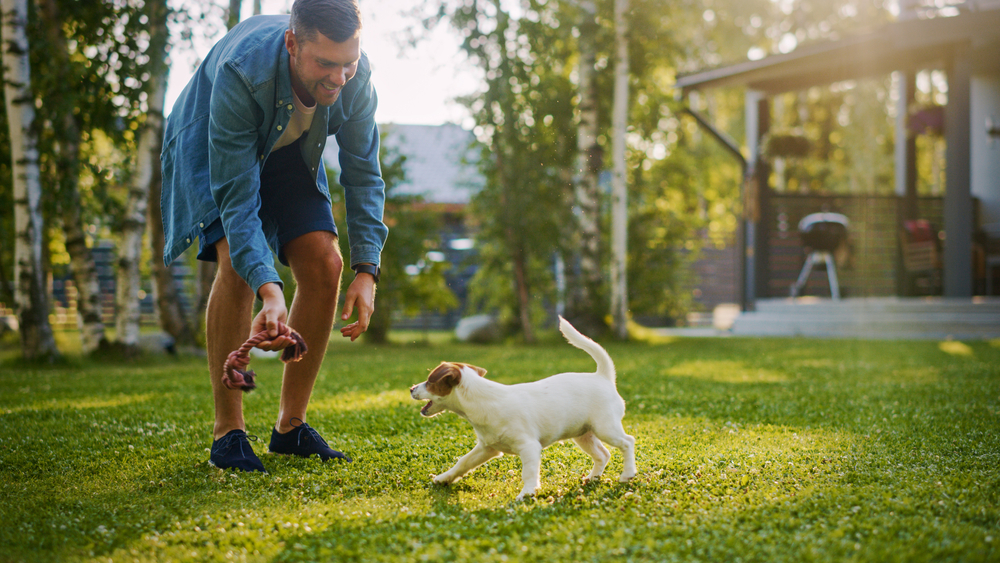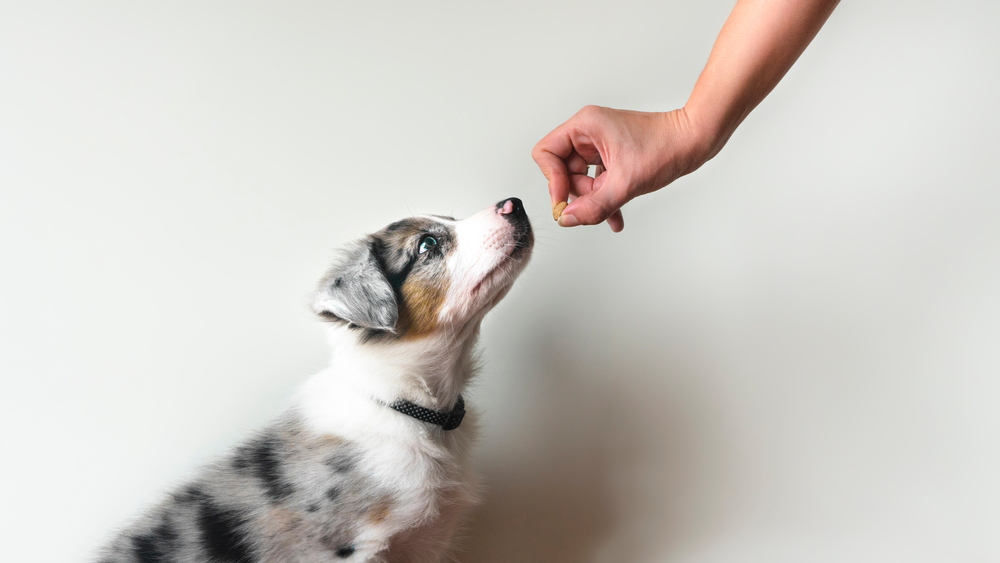A puppy can be a disruptive presence in your home, and while no puppy is fully trained at adoption, you want to ensure your puppy is trainable so you don’t regret your decision. Certain factors and life experiences affecting a puppy can help prevent behavioral issues. Our Veterinary Behavior Solutions team wants your puppy adoption to be a success, and we provide tips to help you select a puppy who is not predisposed to behavioral problems.
#1: Choose a puppy breed that complements your family lifestyle
A puppy’s breed strongly influences their development. When choosing a breed, consider these factors:
- Activity level — Are you laid back, or do you enjoy being physically active during your down time? This is important because some dogs, such as border collies and Labrador retrievers, require more exercise, and you likely will not appreciate their high-energy antics if you prefer watching movies on the couch. In addition, certain breeds are bred differently for various purposes, and you should be mindful of which line you adopt. For instance, Labrador retrievers have working lines that are bred to have a job, and show lines that typically make better pets.
- Friendliness — If you have children or frequent visitors to your home, friendliness is likely an important dog trait. No breed is described as unfriendly, but descriptions, such as courageous, loyal, reserved, vigilant, and aloof, can indicate a breed is not profusely affectionate. When specifically searching for a friendly breed, look for descriptions such as gentle, mellow, friendly, affectionate, and happy.
- Grooming — Consider how much time you are willing to spend grooming your dog. Some dogs have short hair coats and are easy to keep groomed, while others, such as Siberian huskies, Bernese mountain dogs, and Great Pyrenees, shed an excessive amount and need frequent grooming to keep their coat from getting matted.
- Health problems — Once you settle on a specific breed, do your research to determine whether the breed is predisposed to health complications and see if genetic tests are available to detect the problem early. In addition, find out the breed’s typical lifespan. Some dog breeds, such as Great Danes, only live 8 to 10 years, and you may want to consider this if you were hoping for a longer commitment.
#2: Observe the puppy with their mother
Having the opportunity to observe a puppy with their mother ensures you aren’t adopting your puppy from a puppy mill (i.e., commercial breeding establishment). Puppies from puppy mills commonly face conditions that affect their welfare and influence their behavior after adoption. Crowded conditions and poor biosecurity frequently lead to health problems, and puppies from these facilities—rather than from responsible breeders—are three times more likely to show aggression toward their owner and two times more likely to show aggression toward strangers. Potential aggression causes include environmental stress the mother endured before the puppy’s birth, stress the puppy felt during their early weeks of life, stress during transit, and a lack of socialization. One study found that dog owners who did not see the puppy with their mother before adoption reported behavioral issues 2.5 times more than owners who observed the puppy and their mother together. A reliable breeder will expect you to see the puppy with their mother and will likely question you to ensure you will provide the puppy a good home.
#3: Ask if the puppy is being socialized
Socialization is vitally important to ensure a puppy grows to be a well-behaved and well-adjusted adult dog. During the first three months of life, puppies learn how to interact with their environment, people, and other dogs. Experiencing new situations and being exposed to many different sights, sounds, and smells in a positive manner helps them cope with their world without being frightened or stressed. Properly socialized puppies are less likely to be aggressive, and they are less likely to develop anxiety-related issues as adult dogs. Socialization should start as early as possible, and one Guide Dogs for the Blind study found that extra socialization while puppies were still with their mother resulted in more confident, friendly dogs. You will need to continue socializing your puppy after you bring them home, but the process should have begun well before the adoption.
#4: Bring your puppy home at the appropriate age

Separating a puppy from their mother and littermates at the wrong age can negatively impact their behavior. From about 3 to 5 weeks of age, puppies learn appropriate play behaviors and how to communicate with and relate to other dogs by observing and interacting with their mother and littermates. In addition, extremely young puppies learn impulse control and bite inhibition from their mother’s and siblings’ reactions. Puppies removed from their litter too early are more likely to display behavioral problems such as fear, aggression, anxiety, and food and toy guarding, and will likely be difficult to train. However, puppies who remain with their littermates too long may develop dominant or submissive behaviors that can also lead to problems. Most veterinarians and breeders recommend bringing home your puppy when they are between 8 and 10 weeks of age.
By following these tips, your chances of choosing an easily trainable puppy improve. If your puppy is exhibiting behavioral issues, contact our Veterinary Behavior Solutions team so we can help identify their problem, and develop an effective training plan.







Leave A Comment